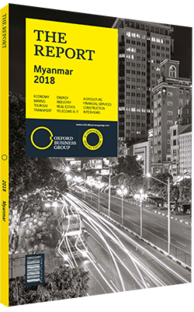Ken Tun, CEO, Parami Energy Group: Interview

Interview: Ken Tun
In what ways can the country more effectively provide electricity to its rural population?
KEN TUN: Myanmar urgently needs electricity. Today only 3m households out of some 10m have access to the power grid. Under the National Electrification Plan, the World Bank has set out to deliver electricity to the remaining 7m households in the next 10 years by expanding the central power grid. In the meantime, the government is expected to provide pre-electrification through solar home systems for those families that will not be connected to the central power grid, at an estimated cost of $90m. Approximately 30,000 of these households are expected to be connected to electric power through mini-grid solutions.
The problem with the approach initially devised by the World Bank is that isolated areas and farmers cannot wait 15 years to have electricity. They need a faster solution and the only way to electrify rural areas in less than seven years is to combine the top-down approach, meaning the expansion of the central power grid, with a bottom-up strategy encompassing the development of mini-grid power solutions. Today, it is becoming widely recognised that investment in mini-grids is the quickest solution for the electrification of Myanmar. However, mini-grid developers still face a lot of risks in the generation, transmission and distribution of power within the mini-grid system. They have to invest in a generation asset, normally a solar power station and a diesel back-up generator; build the transmission lines; manage the network; and collect the generation and transit fees from the households connected to the mini-grid. Currently, there is no consensus on the best way to bring electricity to rural areas.
How can Myanmar leverage its geographic location to maximise efficiency and minimise costs?
TUN: When energy is only consumed by one country, it becomes inefficient in the long run. If you have regionally connected power transmission infrastructure, it is possible to increase energy consumption efficiency. Given its geographic location, nestled between India and China, Myanmar could establish itself as an energy transit country. By increasing the number of power transmission connections to its neighbours, Myanmar could import energy to feed its domestic grid. It could export some of that equivalent energy to neighbouring Thailand, a much larger consumer of power than ourselves, and make money out of that transaction.
At the moment, for an installed capacity of 300 MW, Myanmar’s lowest electricity tariff is $0.12 per KWh, whereas the tariff in neighbouring India and Bhutan is around $0.07 per KWh. Investment in more regional energy connectivity would not only contribute to speeding up Myanmar’s electrification process and increasing energy consumption efficiency, it would also establish the country as an interesting energy corridor between the neighbouring countries of China, India and Thailand.
How do you view the development of the local liquefied petroleum gas (LPG) market?
TUN: Myanmar has emerged as a market with tremendous growth potential for LPG consumption. As the economy continues to develop we can expect growing demand for LPG, driven by the expansion of the industrial sector, a growing urban population and new commercial businesses, such as hotels, restaurants and other companies and organisations that require the gas.
At present, peak electricity load occurs at cooking times, and annual consumption of LPG is around 100,000 tonnes. In comparison, neighbouring Thailand consumes an annual total of 4m tonnes of the gas. The scale of this difference in consumption levels gives us an indication of the tremendous room for growth that Myanmar can offer as an LPG market in the coming years. Short-term LPG policy should focus on safety in handling, transport and usages to align with international standards and attract FDI. In the longer term Myanmar needs a master plan for LPG infrastructure.
You have reached the limit of premium articles you can view for free.
Choose from the options below to purchase print or digital editions of our Reports. You can also purchase a website subscription giving you unlimited access to all of our Reports online for 12 months.
If you have already purchased this Report or have a website subscription, please login to continue.

